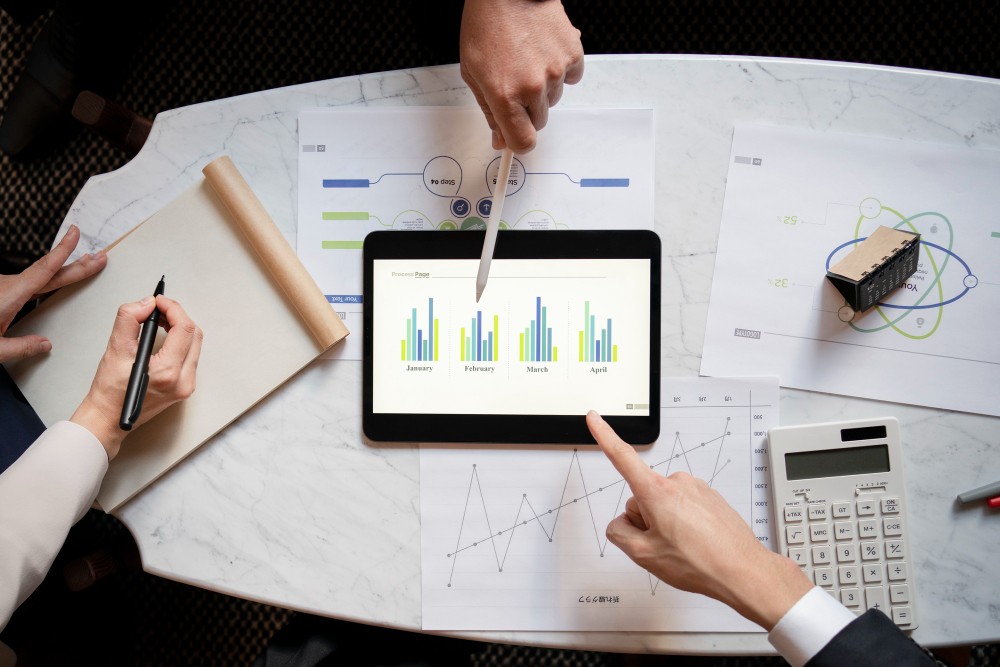Have you ever wondered how large enterprises are able to predict their sales for the next year, how meteorologists can forecast the weather for the coming week, or how stock analysts anticipate upcoming market trends to make large financial investments? The answer lies in time series analysis and forecasting, a powerful method that analyzes past data to make informed predictions about the future. From finance to healthcare, retail to climate science, this technique is helping organizations make strategic decisions, reduce operational risks, and prepare for future challenges.
What is Time Series Analysis?
At its core, time series analysis focuses on studying data points that have been collected over a period of time. Unlike traditional data analysis – where order doesn’t always matter – in this method, time is the crucial factor. Let us consider the example of a physician who is tracking a patient’s health records over the years. Instead of looking at the patient’s charts in a mixed order, the doctor will analyze the records in a sequential manner, to identify the various patterns and trends in their health and prescribe medications, accordingly.
Real-World Applications of Time Series Analysis
Below is a snapshot of how time series analysis plays a vital role in multiple industries,
- Retail: Retail planners rely on it to predict product demand, optimize procurement and inventory, and improve sales strategies based on seasonal trends.
- Climate Science: Scientists use it to analyze temperature changes, forecast natural disasters, and study long-term environmental shifts.
- Manufacturing: Factory managers depend on time series analysis to predict equipment failures, reduce downtime, and improve supply chain efficiency.
- Healthcare: Hospital administrators use it to forecast patient admission trends, track disease outbreaks, and efficiently manage resources.
- Finance: Investment bankers leverage time series analysis to predict stock prices, assess investment risks, and optimize portfolio management.
- Marketing: Businesses users analyze time series data to optimize advertising expenditure and forecast consumer trends.
Key Patterns in Time Series Data
Every time-based dataset exhibits unique characteristics based on which data scientists can unlock the true value for future predictions.
a) Trends:
A trend refers to a long-term increase or decrease in the value of the data. For example, the global average temperature has been rising on account of climate change.
b) Seasonality:
Seasonal patterns tend to repeat at fixed intervals, such as daily, monthly, or yearly. E-commerce platforms see higher sales during festive seasons across different countries. Similarly, electricity consumption spikes in summer due to the increased usage of air conditioners and coolers.
c) Cyclic Patterns:
Unlike seasonality, cyclic patterns occur over varying timeframes. Economic cycles, such as booms and recessions, follow cyclical trends but do not adhere to a fixed duration.
d) Noise:
Noise refers to random fluctuations in data that do not contribute to meaningful patterns. Stock price spikes due to breaking news or unexpected social media trends introduce noise into financial markets.
How Do We Forecast Time Series Data?
There are different forecasting methodologies which can be used for predicting future values. Data scientists have to select the most appropriate and accurate method based on the available data and the corresponding business use case.
- Autoregressive Integrated Moving Average (ARIMA)
The ARIMA model uses historical data to predict future trends. It is effective for non-seasonal datasets, such as forecasting Gross Domestic Product (GDP) growth or inflation rates. However, it struggles with strong seasonal fluctuations and therefore should not be selected for those types of forecasts. - Exponential Smoothing (ETS Models)
This method assigns higher importance to recent data while still considering past patterns for predictions. It works well for short-term forecasting in industries like power consumption, retail demand, and finance. - Facebook Prophet
Developed by Meta, Prophet is a user-friendly model that is designed for business forecasting. It handles missing data, seasonality, and anomalies well, making it ideal for website traffic prediction, financial modeling, and sales forecasting. - Long Short-Term Memory Networks (LSTM)
LSTM, a deep learning model, processes long-term dependencies in historical data. It excels at stock market prediction, speech recognition, and customer behavior forecasting. - Seasonal ARIMA (SARIMA)
SARIMA improves ARIMA by incorporating seasonal components, making it useful for datasets with recurring patterns like airline passenger traffic and weather trends. - SARIMA with Exogenous Variables (SARIMAX)
SARIMAX builds on SARIMA by including external factors (exogenous variables) to improve predictions. For example, it can forecast retail sales while considering holidays, marketing campaigns, and competitor pricing.
Latest Trends in Time Series Forecasting
Time series forecasting is rapidly evolving with the adoption of advanced Artificial Intelligence (AI) and Machine Learning (ML) techniques. Transformers can efficiently process long-range dependencies and thus, improve the accuracy of forecasts. Unlike traditional models that struggle with sequential data, transformers use self-attention mechanisms to dynamically weigh the importance of past data points. This makes them particularly effective in financial forecasting, weather prediction, and demand planning.
Convolutional Neural Networks (CNNs) can detect localized patterns in time series data, which makes them useful for anomaly detection and image-based forecasting. By applying convolutional filters, CNNs extract features such as seasonal trends or sudden changes, which can be crucial for applications like predictive maintenance, where subtle variations in sensor data can indicate equipment failures.
Automated Machine Learning (AutoML) tools simplify forecasting by automatically selecting the best model, tuning hyperparameters, and optimizing results. This makes advanced forecasting accessible to non-experts.
AI-driven anomaly detection helps identify fraud, cybersecurity threats, and faulty equipment before problems escalate. By continuously analyzing patterns in time series data, AI models can detect deviations from normal behavior, flagging suspicious activities in financial transactions or predicting failures in industrial machinery.
Transfer learning applies models trained in one domain to another, improving forecasting efficiency. For instance, a climate forecasting model trained on global temperature patterns can be adapted to predict agricultural yield by fine-tuning it with localized weather and soil data. This approach reduces the need for extensive labeled data and accelerates the deployment of forecasting solutions in new domains.
Conclusion
Time series forecasting isn’t just about numbers—it’s about helping make better informed decisions. While the use cases of time series analysis are virtually infinite, the benefits that enterprises, businesses and individuals can derive from it are equally endless.

I’m a data analyst with a background in statistics and a passion for time-series forecasting and machine learning. I work extensively with Python, SQL, and visualization tools to uncover patterns and build predictive models. Through my blog, I aim to make complex analytical techniques accessible and practical for real-world use.



